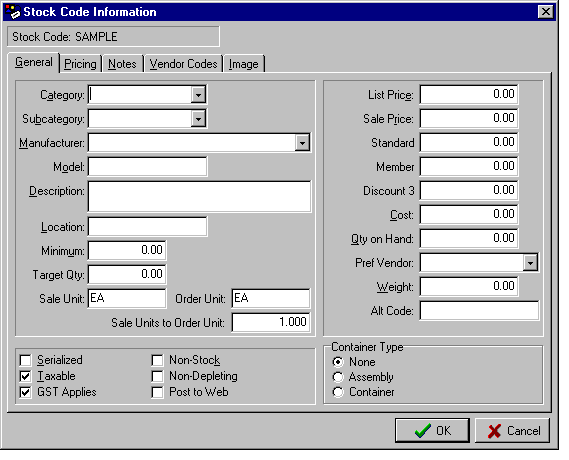Tip: If you have a large number of parts to enter, such as a catalog of faucets the fastest way is to import them.
1. Stockcodes may either be parts or task numbers.
2. When entering new parts, it is better to follow a logical numbering sequence but it's not absolutely necessary.
3. Use Category, Subcategory and Manufacturer to improve your data management. This can save you effort later on with price updates and reports.
4. The description can accommodate up to 60 characters.
5. There are fields for bin location, order quantities and other inventory features if you need them. ( we're focusing on tasks for the price book).
6. Container Type If this new stock code is to be used as a task, you will activate the "Container" button. Otherwise, a normal part would use the "None"
7. Tasks will be "Non-Depleting.
8. If you are using the system for sales tracking and management, the Taxable and GST boxes will need to be used. If you are simply printing price books, they are irrelevant.9. List, Sale, and other discount fields help you see the effects of varying discounts. They are calculated autmatically but can be overridden.
NOTE: List & Sale prices are in the price book as Standard and Value rate.
10. Cost. If it is a part, it will reflect the data you have entered. If it is a task (container) it is calculated and shows the direct cost, including deployment for this task.
